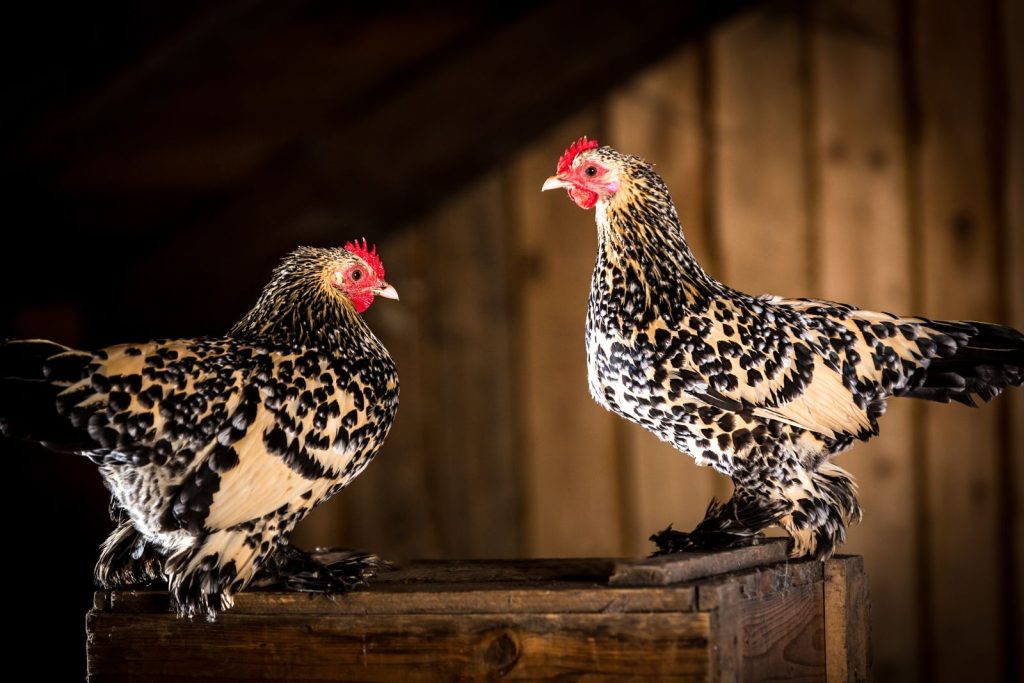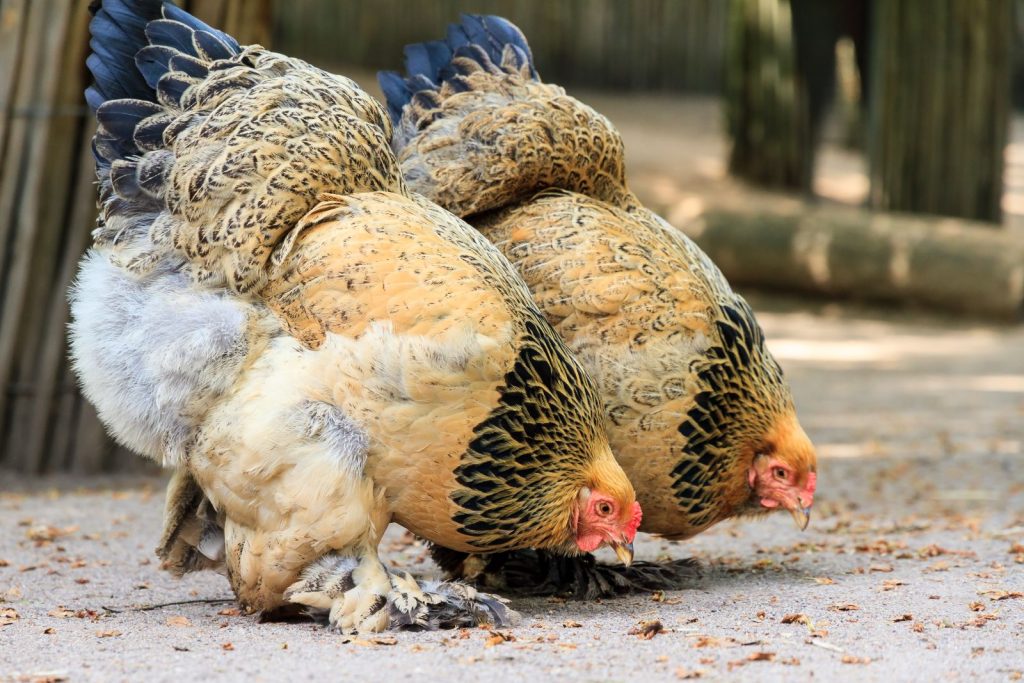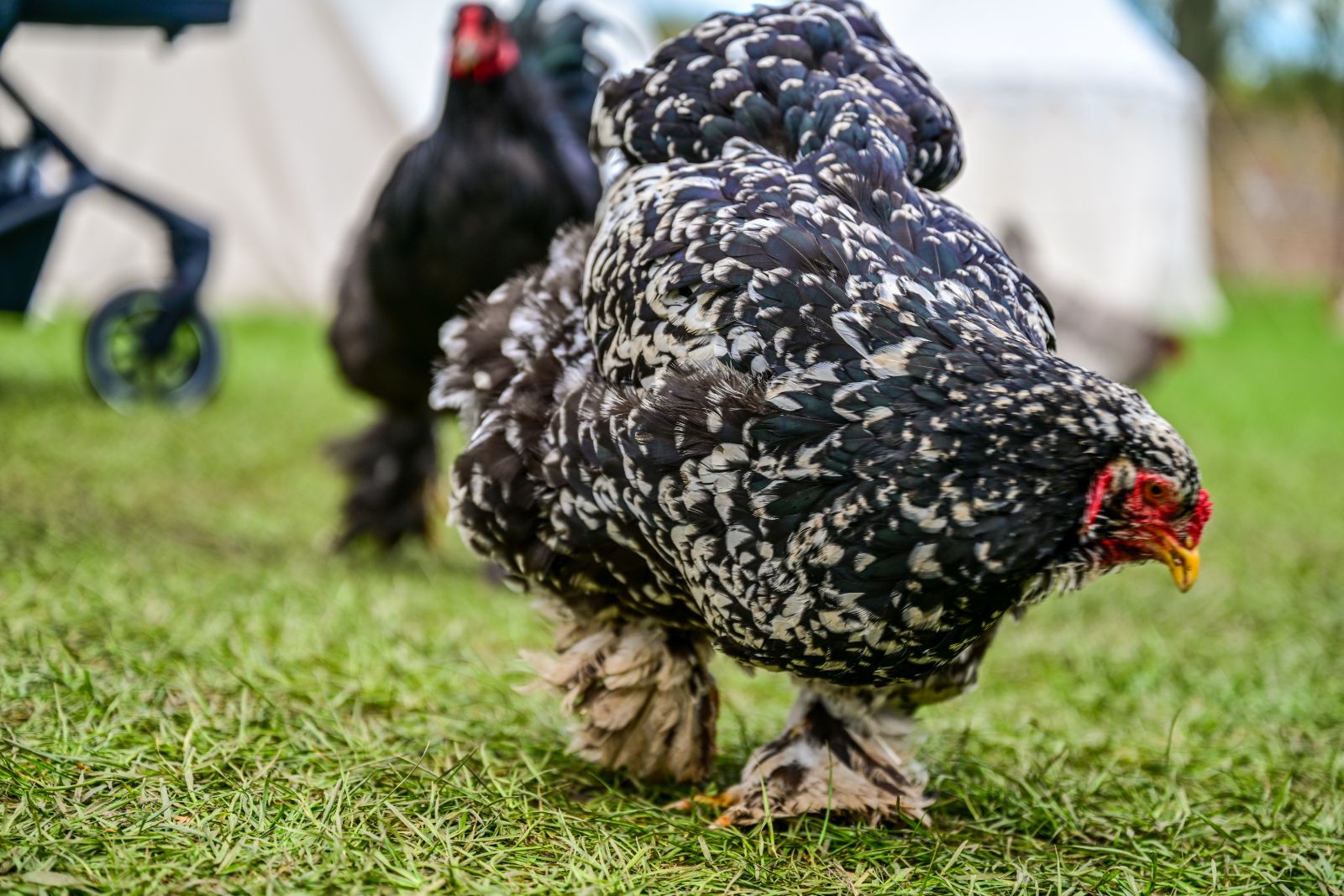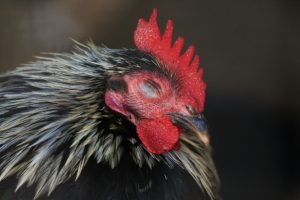Chicken breeds with feathered feet are often eye-catching, but they require special attention to stay healthy and comfortable. Whether you’re considering adding these distinctive breeds to your flock or already have some feather-footed friends in your coop, here’s everything you need to know about caring for these unique chickens.
Meet the Chicken Breeds with Feathered Feet
Feather-footed chicken breeds stand out for their distinctive appearance and gentle personalities. Brahmas, often called the “gentle giants” of the chicken world, are large, docile birds known for their impressive size and winter hardiness. These peaceful birds typically weigh 8-10 pounds (3.6-4.5 kg) for hens and up to 12 pounds (5.4 kg) for roosters.
Cochins are another popular feather-footed breed, cherished for their friendly nature and fluffy appearance. These medium-to-large birds have extensive feathering from head to toe, giving them a uniquely rounded appearance. Standard Cochin hens weigh around 8.5 pounds (3.9 kg), while roosters reach about 11 pounds (5 kg).
Both breeds also come in Bantam varieties, offering the same lovely features in a smaller package. Bantam Brahmas are surprisingly substantial for their size, with hens weighing around 30-34 ounces (850-960 g) and roosters reaching 38-42 ounces (1080-1190 g). Bantam Cochins are similarly sized, with hens at 26-30 ounces (740-850 g) and roosters weighing 30-34 ounces (850-960 g). These miniature versions share the same gentle temperament and cold hardiness as their larger counterparts.
Both standard and bantam varieties make excellent backyard companions, adapting well to confinement and showing remarkable tolerance for cold weather thanks to their abundant feathering.

Special Care Requirements
Taking care of feather-footed chickens requires some additional attention compared to smooth-legged breeds. The feathers on their feet can collect mud, debris, and moisture, potentially leading to health issues if not properly maintained. Here’s how to keep your feathered-foot chickens healthy and comfortable.
Coop Flooring and Run Maintenance
The key to healthy feathered feet starts with proper flooring. Keep the coop floor dry and clean, using absorbent bedding materials like pine shavings or straw. Avoid sand as primary bedding, as it can become trapped in foot feathers and cause irritation.
In the run, create raised areas with good drainage to give your chickens dry places to stand. During wet weather, consider adding extra coverage or placing wooden platforms in frequently used areas. This helps prevent mud from becoming packed into the foot feathers.
Regular Foot Checks and Cleaning
Make checking your chickens’ feet part of your regular routine. Gently examine the feet for any signs of caked mud, tangled debris, or potential health issues. If you notice packed mud or debris:
- Soak the feet in lukewarm water to soften any dried material
- Carefully remove debris using your fingers or a soft brush
- Gently pat the feathers dry with a clean towel
- Allow the chicken to dry completely in a clean, warm area
Health Monitoring
Watch for signs that might indicate foot-related health issues, such as limping, reluctance to walk, or matted feathers. Check regularly for signs of bumblefoot or scale mites, which can be harder to spot under foot feathers. Contact a veterinarian if you notice any concerning symptoms, as early intervention is crucial for foot-related problems.

Seasonal Considerations
Different seasons bring different challenges for feather-footed breeds. Spring often means dealing with mud and rain, while summer requires attention to keeping feet clean and dry in dusty conditions. Fall is an excellent time to prepare your coop and run for winter by ensuring proper drainage and coverage are in place.
Winter Care Considerations
While feather-footed breeds generally handle cold well, their feet need extra protection in winter. Snow and ice can accumulate in foot feathers, potentially leading to frostbite. Keep paths to feeding and watering areas clear of snow and ice. During extremely wet or snowy conditions, consider creating a covered area in the run where your chickens can keep their feet dry.
Managing Muddy Conditions
Mud presents one of the biggest challenges for feather-footed chickens. To minimize problems during wet weather:
Create proper drainage in your chicken run by adding gravel or drainage material in problem areas. Add a layer of wood chips or straw in heavily trafficked areas to provide dry walking surfaces. Consider installing gutters on your coop to direct water away from the run area.
Creating the Ideal Environment for Feather-Footed Hens
Success in raising feather-footed chickens comes down to creating an environment that supports their unique needs. Focus on maintaining clean, dry conditions and establishing a regular monitoring routine. With proper care, these distinctive breeds make wonderful additions to any backyard flock, providing both beauty and personality to your chicken-keeping experience.
Remember that prevention is always easier than dealing with problems once they develop. By maintaining proper coop and run conditions and staying attentive to your chickens’ needs, you’ll help ensure your feather-footed friends stay healthy and happy throughout the year.





0 Comments